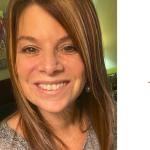
Psychoanalysis, founded by Neurologist Sigmund Freud, is the hallmark of psychotherapy. Freud believed that individuals have levels of consciousness and mental health disorders come from the unconscious mind, which stores primal energy and sexual urges.
Psychoanalysis’s goal is to make the unconscious conscious so people can better understand their whole self. Because the unconscious guards repressed emotions and memories, people can be hesitant to bring them forward. Freud referred to these defense mechanisms as ways people avoid confronting their unconscious thoughts.
Psychoanalysis uses the Rorschach inkblot test, free association, and dream analysis.
Rorschach inkblot tests are ambiguous images that have no meaning. Psychoanalysts ask a person to explain what they see within the image and then interpret their unconscious material from there.
Free association is when a psychoanalyst says a word or phrase, and then the person is encouraged to speak about whatever first comes to mind. Free association aims to discover parts of repressed memories and incorporate them into the conscious mind.
Dream analysis asks people to explain their dreams. Then, the psychoanalyst makes interpretations, or guesses, about the dream’s latent content. Latent content refers to what the dream means instead of the dream’s manifest content, which is what happened during the dream.
Psychoanalysis is an intensive form of therapy that requires years of work. It can be helpful for people experiencing anxiety or depression or for people who want to incorporate unconscious material into their consciousness.
Therapists Who Specialize in Using Psychoanalysis














